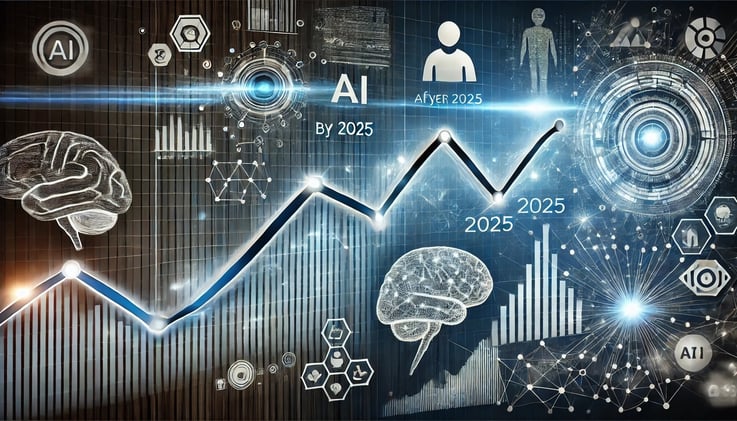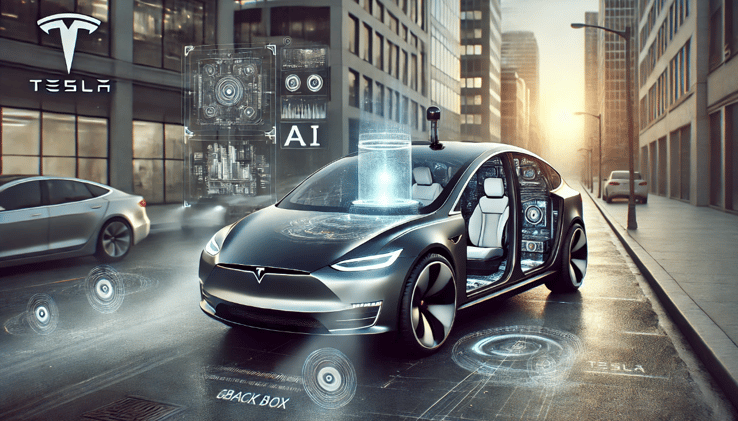
Image Source: ChatGPT-4oGoogle CEO Sundar Pichai on AI’s Future, 2025 Slowdown, and Challenges
During a recent conversation with The New York Times, Google CEO Sundar Pichai shared insights about the future of artificial intelligence (AI), projecting a potential slowdown in development by 2025. Alongside his prediction of a potential AI slowdown by 2025, Pichai shed light on the critical breakthroughs needed to sustain progress, Google’s approach to innovation, and the broader implications of AI on society.
The ‘Low-Hanging Fruit’ Era of AI is Over
Pichai acknowledged that while the progress in large language models (LLMs) has been remarkable, most leading AI companies, including Google, Microsoft, and OpenAI, are now converging on similar capabilities. "The current generation of LLMs has reached a point where several companies are at the top," he noted. However, the trajectory ahead will be more challenging.
"When I look at 2025, the low-hanging fruit is gone. The curve is steeper," said Pichai, emphasizing that future innovation will hinge on deep, technical advancements rather than just scaling compute power. He believes this will differentiate teams that can pioneer these breakthroughs.
Breakthroughs Beyond Compute Power
Pichai highlighted the challenges of advancing AI beyond its current capabilities. While increasing computing capacity remains pivotal, Pichai pointed out that compute resources alone will not drive the next wave of AI innovation. Instead, the focus will shift toward:
- Algorithmic advancements: making systems more capable and efficient
- Improved reasoning: enhancing decision-making and task execution by AI systems
- System planning breakthroughs: optimizing processes and enabling AI to perform complex sequences of actions reliably
"Throwing more compute at the problem helps initially," he remarked. "But the next stage will require fundamentally deeper technical breakthroughs."
Differing Perspectives on AI’s Future Trajectory
Pichai’s observations contrast with OpenAI CEO Sam Altman’s view, who recently dismissed the idea of any significant slowdown or ‘wall’ in AI development. Altman maintains that advancements in processing power and algorithms will sustain rapid growth in AI capabilities. However, Pichai offered a more tempered outlook, suggesting that while progress will continue, it will demand more sophisticated solutions.
This divergence in outlook underscores the varying challenges faced by leading AI companies as they attempt to push the boundaries of what’s possible.
Google’s Deep Integration of AI Across Products
Pichai emphasized how Google has already embedded AI deeply into its products, driving innovation in areas like:
- Search: AI tools, including Gemini, are being used to enhance search accuracy and tackle more complex queries
- Waymo: Google’s autonomous driving arm recently surpassed 175,000 self-driving rides per week, signaling substantial progress in the field
- AlphaFold: Google’s AI-driven protein folding solution has revolutionized biological research and drug discovery, with implications for addressing diseases like cancer
These examples highlight Google’s commitment to using AI to solve real-world problems while continuing to enhance consumer-facing services.
Critiques of Google’s Innovation Pace
The interview also addressed critiques of Google’s pace in AI innovation. While critics like Charlie Munger have raised questions about Google’s agility, Pichai defended the company’s focus on steady, impactful execution.
Pichai countered these concerns by pointing to tangible results:
- Waymo: has achieved a significant milestone by improving autonomous driving performance to levels exceeding human drivers in certain scenarios
- Google search: has successfully integrated AI into its platform, benefiting over a billion users worldwide with features like multimodal search capabilities
Pichai stressed the importance of building a culture of long-term execution and responsible innovation.
The Industry’s Next Phase: A Critical Inflection Point
For businesses, researchers, and policymakers, 2025 could serve as a critical inflection point, where AI innovation transitions from broad accessibility to a phase requiring targeted investments in research and development.
As the AI industry braces for its next phase of growth, collaboration across sectors—spanning research, policy, and technology—will be critical to shaping a future where AI reaches its full potential responsibly.
Editor’s Note: This article was created by Alicia Shapiro, CMO of AiNews.com, with writing, image, and idea-generation support from ChatGPT, an AI assistant. However, the final perspective and editorial choices are solely Alicia Shapiro’s. Special thanks to ChatGPT for assistance with research and editorial support in crafting this article.
Sources:
- The New York Times
- OpenAI
- Google News







